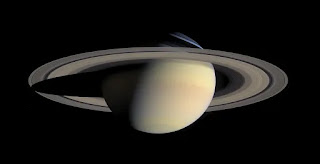Solar System
Our solar system is one of over more then 500 known solar systems in the entire Milky Way galaxy. The solar system came into being about 4.5 billion years ago, when a cloud of interstellar gas and dust collapsed, resulting in a solar nebula, a swirling disc of material that form the solar system.
Location - The solar system is located in the Milky Way's Orion star cluster.
Only 15% of stars in the galaxy host planetary systems, and one of those stars is our own sun. Revolving around the sun are eight planets. The planets are divided into two categories, based on their composition, Terrestrial and Jovian. Terrestrial planets including Mercury, Venus, Earth, and Mars, are primarily made of rocky material. Their surfaces are solid,they don't have ring systems, they have very few or no moons, and they are relatively small.
Mercury- The smallest and closest to the sun is Mercury, which has the shortest orbit in the solar system at about three Earth months.
Venus- It is the hottestplanet, with temperatures of up to 867° Fahrenheit, due to an atmosphere of carbon dioxide andextensive lava flows.
Earth- Next to this world of fire is a world of water, Earth. The water systems onthis planet help create the only known environment in the universe capable of sustaining life.
Mars- The last of the terrestrial planets, Mars, might have also supported life about 3.7 billion years ago, when the planet had a watery surface, and moist atmosphere.
Beyond the four Terrestrial planets of the inner solar system the Jovian planets of the outer solar system. The Jovian planets include gas giants Jupiter and Saturn and ice giants Uranus and Neptune.
The gas giants arepredominantly made of helium and hydrogen, and the icegiants also contain rock, ice, and a liquid mixture ofwater, methane, and ammonia.
All four Jovian planets have multiple moons, sport ring systems, have no solid surface, and are immense.
Jupiter- The largest Jovian is also the largest planet in the solar system, Jupiter.
Saturn- Nearby is Saturn, the solar system's second largest planet. Its signature rings are wide enough to fit between Earth and the moon, but are barely a kilometer thick.
Uranus- Past Saturn are the icegiants, Uranus and Neptune. The slightly bigger of these ice giants, Uranus, is famous for rotating on its side.
Neptune- Next to Uranus is Neptune,the outermost planet in the solar system, and also one of the coldest.
Orbiting the Terrestrial planets is the asteroid belt, a flat disc of rocky objects, full of remnants from the solar system's formation. From microscopic dust particles, to the largest known object,the dwarf planet, Ceres. Another disc of space debris is much further out, and orbits the Jovian planets, the icy Kuiper Belt.
Apart from asteroids, the Kuiper Belt is also home to dwarf planets, such as Pluto, and is the birthplace of many comets. Beyond the Kuiper Belt is the Oort Cloud, a vast, spherical collection of icy debris. It is considered the edge of the solar system since that is where the gravitational and physical influences of the sun end. Our solar system's spacticular configuration of planets and other celestial objects, all revolving around a life- giving star, make it a special place to call home.
~αтυℓ вσүℓℓα~















2 Comments